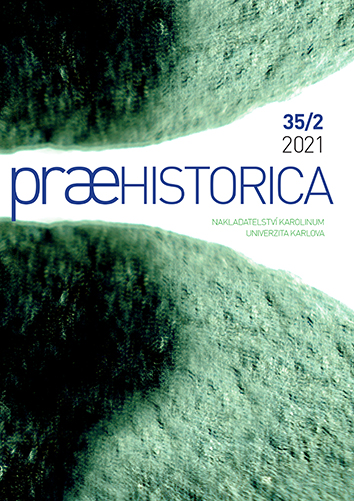Das Reichskloster Chemnitz im 12. und 13. Jahrhundert. Landesausbau und Konflikt in Böhmens nördlicher Nachbarschaft
The imperial monastery in Chemnitz in the 12th and 13th centuries: Colonisation and conflict in the northern neighbourhood of Bohemia
Author(s): Karlheinz HengstSubject(s): Archaeology
Published by: Univerzita Karlova v Praze, Nakladatelství Karolinum
Keywords: Saxony; Meissen; Ore Mountains; Chemnitz; Early Middle Ages; High Middle Ages; 1000–1300; settlement process; colonization; personal names; place names; onomastics; archaeology; history; local history
Summary/Abstract: The initial period of the Benedictine monastery in Chemnitz has become the subject of concentrated interest of historians, archaeologists and linguists in recent years. It has turned out that the foundation of this monastery was a well-thought-out action of Emperor Lothar III, which created the preconditions for a settlement to the Ore Mountains within the then Meissen Margraviate. The massive settlement wave, led by the imperial ministerialism and culminating during the reign of Emperor Fredrick I Barbarossa in the second half of the 12th century, originated from the territory at the rivers Sprotte, Pleiße, Zwickauer Mulde and Chemnitz, whose name was still written as Kameniza in 1174.The presented study first briefly summarizes the existing knowledge on the early medieval settlement in the area around today’s Rochlitz (Altgau Rochelinzi), where the royal court was located and whence important roads to Bohemia came (semita Bohemica). At the same time, a hypothesis is presented about the early settlement process along the River Chemnitz, which preceded the founding of the monastery. The author further argues – based on linguistic analysis – that the contents of the founding deed, which dates back to 1143, can be used to know the early period of the monastery in Chemnitz. Then attention is turned to the documents and history of the monastery in the second half of the 12th century and in the 13th century, especially to the historical context of the damage to the monastery by the Bohemian army in 1213.
Journal: Praehistorica
- Issue Year: 35/2021
- Issue No: 2
- Page Range: 143-159
- Page Count: 17
- Language: German

